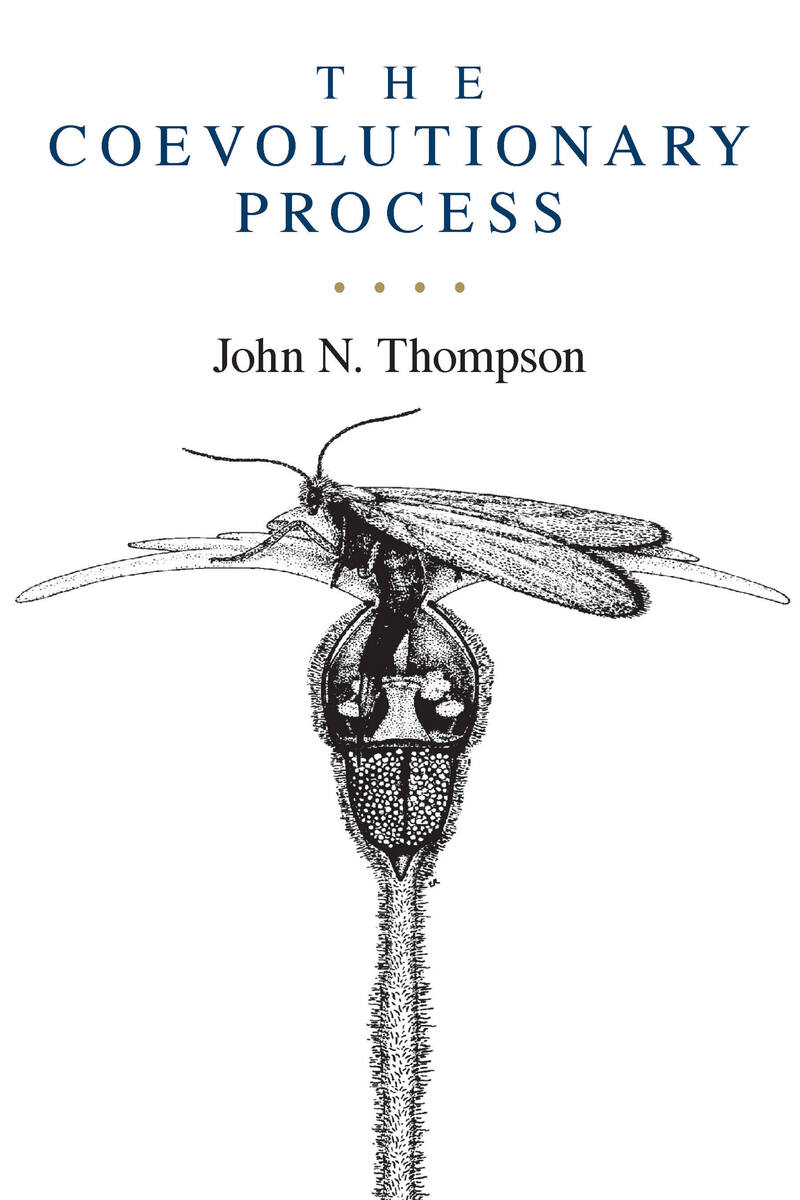Cloth: 978-0-226-79759-5 | Paper: 978-0-226-79760-1 | Electronic: 978-0-226-79767-0
DOI: 10.7208/chicago/9780226797670.001.0001
AVAILABLE FROM
University of Chicago Press (cloth, paper, ebook)DeGruyter Multi-User Ebook Program
Google Play
Kno
ABOUT THIS BOOK
Using examples of species interactions from an enormous range of taxa, Thompson examines how and when extreme specialization evolves in interdependent species and how geographic differences in specialization, adaptation, and the outcomes of interactions shape coevolution. Through the geographic mosaic theory, Thompson bridges the gap between the study of specialization and coevolution in local communities and the study of broader patterns seen in comparisons of the phylogenies of interacting species.
REVIEWS
"[Thompson] argues convincingly that intense study of interactions between species within local areas and phylogenetic analyses of species interactions illuminate only a fraction of the coevolutionary process. Instead, he emphasizes that one must also consider geographic variation in these interactions . . . . This book has a lot to recommend it."
“In this well-documented and clearly written book, Thompson has managed to integrate an enormous body of literature in a clear-eyed overview of a difficult and diverse field. We are impressed not only with the scope of the book, which includes a myriad of examples from a variety of taxa, but also with the attention to detail.”
“The importance of Thompson’s geographical perspective cannot be overstated. Thompson uses it to turn existing views on their head. In particular, he very effectively dismantles our idea of diffuse coevolution by illustrating with numerous examples how what appears to be diffuse is probably much more specific when one looks at the variability in interactions among populations or time periods. I believe that the geographical perspective on coevolution may turn out to be the greatest advance in coevolutionary thinking in years.”
TABLE OF CONTENTS
Preface
Overview
Part I. The Entangled Bank
1 Specialization within Darwin's Entangled Bank
2 From the Entangled Bank to the Evolutionary Synthesis
3 Specialization and Coevolution since the Evolutionary Synthesis
Part II. The Evolution of Specialization
4 Phylogeny of Specialization
5 Evolutionary Genetics of Specialization
6 Ontogeny of Specialization
Part III. Natural Selection and the Geographic Structure of Specialization
7 Why Parasitism Is Special
8 Choosing among Multiple Victims
9 Coping with Multiple Enemies: The Geogrraphy of Defense
10 Extreme Specialization in Mutualists
11 Further Limitations on Specialization in Mutualisms
Part IV. Specialization and Coevolution
12 Genetics of Coevolution
13 The Geographic Mosaic Theory of Coevolution
14 Diversifying Coevolution
15 Assymetries in Specialization and Coevolution
16 Pushing the Limits of Coevolution
Synthesis: The Geographic Mosaic in Evolving Interactions
Epilogue: Specialization, Coevolution, and Conservation
Literature Cited
Index
